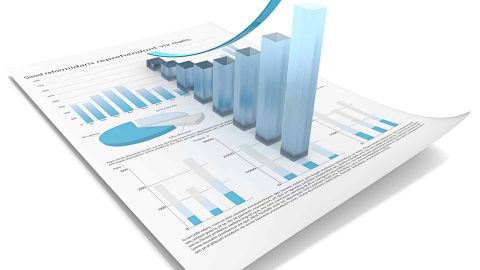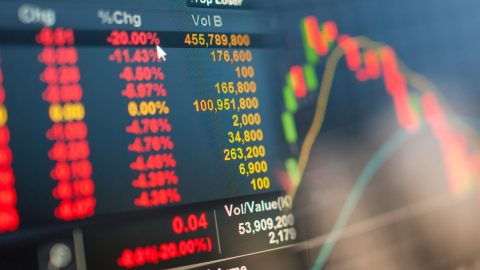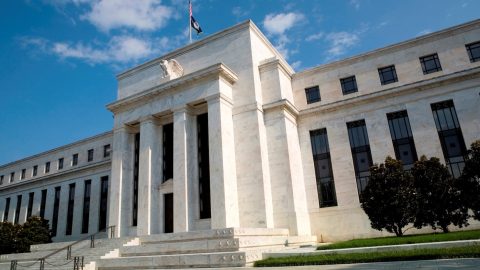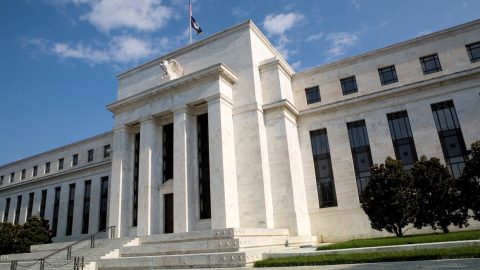All articles on the topic “Financial Know How”

A brief history of time.. and markets
In the nineteen-sixties, mathematician Benoit Mandelbrot noticed something that experienced traders had known for long: that time at the stock exchange does not always run the same. Read about the relativity of time here.

Knowing the Future: parallels between weather and financial forecasting
Google ‚forecasting future‘, and over 28 million hits appear. Clearly, knowing what will happen before it happens is big business: from financial markets to the weather, and anything in between, says Rosmarie de Wit, Austrian center for meteorology (ZAMG).
How does inflation work? – Part 2: Inflation drivers
There are many factors that may affect inflation. Also, the weights of certain factors may vary across countries. Take the development of the exchange rate, for example.
Inflation worries burdening stock exchanges – part 2: the macro perspective
Equity indices have undergone a global correction in the past days. The Dow Jones index has shed more than 10% from its January high. What is the macro-economic reason for the correction?
Style management in practice: part 2
Having defined and explained various management styles in equity management in part 1, we will now have a look at the specific styles and their return/risk ratio over time.
Style management in practice: part 1
A clear sense of style is not only important in fashion, but more and more so in equity management as well. But what does “style” mean in equity management? Do stylistic preferences change over time, like in fashion? If so, what triggers those changes? Questions upon questions, but before we go into detail in part 2 of this series, let us first clarify what we mean by style(s).
Alternative investment strategies: part 3
In Part two of this series on alternative investment strategies, we described the most important strategies “trend following”, “global macro”, and “long/short equity”. In this Part three, we will be looking at approaches that are less well-known but equally tried and tested.
Monetary policy of central banks is tightening up
Volatility has increased on the markets. The main reason for this has not occurred often in the past years: statements by the central bankers according to which the extremely expansive monetary policy will be reeled in. Are we going through a trend reversal?
Alternative investment strategies: part 2
After illustrating what alternative strategies are in part 1 of this series, how they work, and what benefits and disadvantages they come with, we would now like to discuss some of the most important representatives of this set of strategies. In the following strategies (also called hedge funds), the majority of the capital invested is allocated to alternative models.
After the interest rate hike is before the interest rate hike?
Imagine a fairy that grants you three wishes. What would you wish for? The answer would be very easy for me. I would just like to know if the economy is caught up in a recession of has embarked on an expansionary phase a year from now…
Financial know-how – this is how an equity fund works
Shares (equities) and equity funds – the same or not? Only a small minority of Austrians invest directly or indirectly (via equity funds) in shares. Is it the fear of losses or the lack of knowledge about this asset class that make investors shy away from it?
Increase in inflation has come to an end for now
Two developments are prominently noticeable on the markets at the moment: on the one hand, the indicators of real economic growth suggest a stable real economic growth rate of about 3%. On the other hand, we have seen global consumer price inflation decline since the beginning of the year. The reflation phase, i.e. the general increase in inflation in the second half of 2016, seems to be over (for now).

A niche product with solid returns: hybrid and subordinated bonds with investment grade rating
Author: Christin Bahr, Product Management Securities Erste Group It has been half a year since the launch of the new hybrid bond fund. Reason enough for us to talk to Roman Swaton, Senior Fundmanager.
Alternative investment strategies: part 1
Author: Christian Süttinger Senior Fund Manager Multi Asset Management In the USA, gradually rising interest rates have already become reality. In Europe and in another large economic area, i.e. Japan, the subdued economic development has prevented interest rates from increasing to date. The European Central Bank manages interest rates in such a way as to […]
The best global equity funds under one roof
Markus Jandrisevits has been the manager of our global flagship equity fund since 28 February 2002. The performance to date is impressive on an international scale. I asked Markus what was special about his investment approach and how he has positioned himself in the current stock market phase of high political risks.

Curves (part 6) – provider of yields
Have you ever been to a Californian beach? If you have, you may have noticed the hoards of “searching”, elderly people. They would usually be holding a metal rod that beeps, looking for valuables that no-one else has found. And sometimes somebody finds a lost golden watch on the beach. But most of the time the things that turn up are only worthless beer caps.

What investors can learn from Maria Theresia and the Vienna stock exchange
Austria celebrates the 300th birthday of Maria Theresa. She was born on 13 May 1717 in Vienna. It was her who founded the Vienna stock exchange in 1771 on the basis of an imperial patent (see image), after an earlier, failed attempt in 1761. Even though a lot has changed politically, economically, and technically since then, the eventful history of the Vienna stock exchange is still very instructive for every investor.

Curves (part 5) – the offensive decides the match
Football has two strategies. Some prefer focusing on the defensive so as not to concede a goal – i.e. they try to maintain the status quo. Other teams favour the offensive and actively engage in a fight for victory – i.e. they take risks. The strategies on the bond markets are similar. Credit-safe government bonds are preferably used to protect one’s wealth, whereas risky corporate bonds are chosen to produce surplus gains.
Curves (part 4) – the premium, or spread, is the clincher
The interest rates, or coupons, that bonds pay differ due to a variety of parameters. If bond A pays a higher interest rate than bond B, this premium is referred to as spread.

Stock exchange rules – myth or reality
Who has not heard of the old stock exchange rule “Sell in May and go away” – sometimes complemented by “but remember to come back in September”. We had a closer look at this adage and have analysed the performance on the global stock exchanges over the past 48 years.
Curves (part 3) – peaks and troughs
Investing for the long or the short term? This is the question bond investors ask. In this blog, we will have a look at German government bonds with a remaining time to maturity of two years (2Y; short) and ten years (10Y; long). More specifically, we are interested in the yield differential between the long- and the short-term interest rates. The technical term here is the “slope of the yield curve”.

Curves (part 1) – not only a topic for race drivers
Have you ever been to the Monte Carlo F! Grand Prix? If so, you may have witnessed the problem of turning into a curve too late. The race car hits the crasher barrier faster than the driver can react, and a lot of money has to be thrown at the repair job.
Czech National Bank removes currency floor
Author: Anton HauserSenior Fundmanager Emerging Market Bonds Three and a half years after introduction, the Czech National Bank decided today to remove its 27 CZK/EUR currency floor. Many investors were expecting this decision. Indeed, this trade is currently one of the most popular ones among investors. As expected, the Czech koruna appreciated slightly against […]
US central bank confirms trend reversal
We have seen a number of trend reversals this year, one of them being the end of the negative growth surprises. The forecast of economic growth and inflation are currently not subject to downwards revisions any longer.
Emerging markets bonds in demand
Economic growth in the emerging markets has picked up substantially, while that in the industrialised economies has been rather stable. This has led to an increase in the growth differential in the emerging markets’ favour. Investor demand for emerging markets bonds has been on the rise in search of higher yields and interest rates.
Spotlight on: corporate bonds
ESPA RESERVE CORPORATE: 3 questions for Bernd Stampfl, fund manager.
Brazil: Hope for change stimulates bonds
Author: Felix Dornaus, Senior Fund Manager Emerging Markets Bonds Brazil tactically overweighted at the moment Most of the fundamental economic data are currently not good. In 2016, the country is in recession; for 2017, a minor growth rate of +0.7% is expected. The nominal budget deficit of 2016 is about -10%, with a primary deficit […]
The comeback of the Emerging Markets
Interview with Christian Gaier, Senior Fund Manager for emerging markets government bonds Emerging equity and bond funds have borne the brunt of the consequences of the global uncertainties in the past years. Wars and conflicts in the region, slumping commodity prices (especially oil), and fears of an interest rate reversal in the USA have caused […]

How stock ratios can help build a sector-strategy portfolio (part 2)
In the first part of our sector analysis we explained and examined numerous stock ratios. In this part, we want to have a look at how these ratios can inform strategic considerations and what insights can be gained for the composition of an attractive sector-strategy portfolio.
Bond markets suffering from decline in liquidity
Author: Martina Groll, Senior Fund Manager The bond purchase programme of the European Central Bank has caused a drought on the bond markets. As a result, investors now have to take into account the liquidity risk on top of the interest rate risk and the default risk.
Value versus Growth: Which investment approach to choose?
Everybody who has read academic literature on the performance of shares will know about the fact that value shares (and small cap shares) outperform so-called growth shares in the long run.
Emerging Markets: Opportunities with Corporate Bonds
In an interview with Péter Varga, Senior Fund Manager Erste Asset Management, I am discussing the chances and risks with investments in emerging markets corporate bonds. Many Investors feel unsettled by the weak performance of the emerging markets. Why is this the case?
Interest rate lift-off – Stay cool
Following last week’s surprisingly strong employment report, the odds that the US Federal Bank will start raising its policy rate at the next FOMC-meeting in December jumped to almost 70%. Of course, 70% is still short of 100%, but most observers believe that something terrible must happen in the next four weeks to make the […]
All eyes on Washington: Will the Fed funds rate be raised?
Interest rate decision by the Fed Tomorrow, Thursday 17 September 2015, the federal Open Market Committee (FOMC) of the US central bank Fed will be taking an important decision. Is the Fed funds rate to be raised or not? The financial markets have accorded this decision a particularly important role. After all, the rate hike […]
“Quarterly Capitalism” under attack
If you thought “quarterly” was a simple adverb characterizing a regularly recurring activity, you may need to reconsider. A new term is making the rounds: “quarterly capitalism” – and in this context, “quarterly” stands for “short-term, myopic, greedy and dysfunctional”. In fact, the term was already invented four years ago by Dominic Barton of McKinsey […]
Turning more positive on CEE equities
In searching for a perfect example of a sideways market one does not need to look further than at Central and Eastern European (CEE) equity markets. The CECE Composite, a Euro-based index of 23 Polish, Czech and Hungarian blue-chips (Bloomberg: CECEEUR), has been range bound for nearly four years, rarely trading outside a narrow range […]
When will the earnings momentum rise on the European equity markets?
The stock exchanges have been moving sideways and down for weeks. There are of course enough uncertainty factors such as the Greek crisis, the correction on the Chinese stock exchange, and the expected interest rate increase in the USA that can serve as explanation. However, one factor that has (so far) been left out of […]
Bond investments in the current environment
After the recent, rather substantial corrections on the bond markets many investors were wondering: “Can or should I still invest in bonds or bond funds in view of possibly rising interest rates?” Let’s first have a look at the bonds with the highest quality within the Eurozone, i.e. German government bonds. Where have the prices […]
Is the Eurozone facing a turnaround in interest rates?
Eurozone government bonds have ensured very good performance returns in the past years. The asset class has benefited from the zero interest rate policy and the very expansive monetary policy of the European Central Bank. In recent weeks the prices of bonds from Eurozone countries have gone through a correction, above all German government bonds. […]
Changes in the market regime
The big trends of the past weeks such as the appreciation of the US dollar, the weakening oil price, falling yields, and the outperformance of Eurozone equities have reversed in the past days and weeks, in some cases drastically so. What is behind all of this? When both demand (i.e. economic growth) and supply (i.e. […]
Corporate bonds with short maturities
Bond investors are faced with a difficult environment. Do corporate bonds offer the chance of a halfway decent yield? Stampfl: The statement that bond investors are faced with a difficult environment is actually an erroneous one. A balanced portfolio consisting of bonds from the peripheral countries and the core countries across all sectors would have […]




























